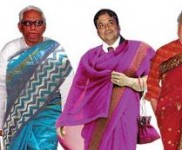Sexism, humour, and The Telegraph

Reality is losing the ability to decently laugh at one¿s self or apologise, at least on newsprint. You encounter televangelic individuals who bask in the glory of their own joyful foolishness repeated in the newspapers each day. But when it comes to a particular type of assertive and sexist humour, it¿s The Telegraph that has momentarily led the show in Kolkata city.
On July 17, a Friday, a state-wide shut-down was called by the Congress in West Bengal. Usually, a bandh takes place on Fridays and Mondays— according to some unwritten consensus among political parties to help tired office goers have a longer weekend. And there are some long winding queues outside most city liquor shops on Thursday evening, but that falls out of the context. The day after, you have the newspapers carrying the usual pictures of children playing cricket on the roads, a deserted office square, interviews of some confused and angry passengers at airports— or if a press photographer gets really lucky— the picture of a burning bus. But this time some people at The Telegraph used their imagination really hard.
On July 18, the newspaper ran its cover story titled "Do it to don¿t do it" on the failure of the administrative machinery to prevent vandalism and the destruction of public and private property during the bandh. It was authored by the "bureau". So far, so good. But right below the title, there was this picture of five bigwigs of the state administration draped in sarees: the chief minister in a blue silk saree, the chief secretary in a pink one, the city police commissioner wearing a red blouse and wheatish coloured saree, and so on. Who says political humour is always crude? To avoid psychic, social, and intellectual interpretations of this extremely imaginative effort, there was a caption that ran like a statutory warning on a cigarette pack: "We apologise to women who may feel the elegant sari has been wasted on our administrators."
Reactions to this humiliating sexist reference to women were immediate. Many professors, gender rights activists, and readers shot off angry letters to the paper, and some signed a petition condemning the graphic. On the same day, a women¿s organisation submitted a petition; and another, a CPI(M) backed one, protested in front of the newspaper¿s office at Chandni Chowk. The publication of this graphic took on ludicrous and even amusing features, particularly when the newspaper acknowledged these protests the next day but defended the visual in another page-one report. Newspapers have a horror of being "misunderstood".
In that report authored by a staff reporter (all caps), The Telegraph asserted its position in rather clumsy terms. The graphic was "to illustrate the paralysis of government draped in humour," it insisted. Sorry if the graphic gave the wrong "gendered" impression: you know, the kyaisa mard ho, churiya pehen lo derogation you invariably make it out to be. To be accused of being "sexist" in the twenty-first century for publishing pictures of men in women¿s clothes is horrible. Surely, no one meant that! Though some readers have taken affront, "(s)ome others have, however, expressed appreciation of the political message we sought to communicate and the humour."
And it went on:
"The Telegraph practises gender equality. It also believes that women have long grown beyond stereotypes as the weaker sex in saris. Sonia Gandhi and Mamata Banerjee are just two examples of women in positions of strength. There are a million other unknown women — in saris or business suits — in whose daily shows of strength we rejoice in the pages of our newspaper. We hope our readers will see the Gang of Five in Saris in that context."
(The Telegraph, July 19, 2009)
Now, now. You shouldn¿t bring into consideration those daily meaty doses of skimpily-clad celebrities appearing elsewhere in the same paper— all those ecstatic and lusty brawns and belles who are neatly laid across in the newspaper¿s tabloid supplement called T2. Nowadays everyone printing "news" and advertisements carries those: The Times of India does far worse. Even the sombre and old Statesman now has its city-supplement attempting that, and a daring by its standards weekend supplement called "Lifestyle" printed in smudgy ink. I guess it¿s got something to do with the lubrication of the strange machinery of what they all sigh and call economic necessity— a machine that runs on sweat, muscle and brains, and often, through the crude exhibition of human flesh.
But let¿s speak in context.
The enhanced presence of women in print space doesn¿t necessarily point to the respect that goes alongside it. And it needs reiterating that it has been a very cheap and mediotic attempt to humour. The newspaper¿s assertion of "you got us wrong folks, we were kidding, right?" makes it worse. For the world existing outside this print space reality and unapologetic fun, this perhaps serves as another example of the deeply rooted sexist preconceptions characterising media behaviour in our subcontinent.






